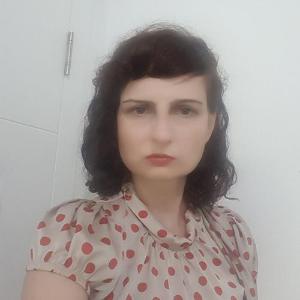"The visibility of new technologies is crucial for market success."
Belgrade is a thriving metropolis, but it is also grappling with rising air pollution. Hundreds of thousands of coal and oil boilers are used to heat homes and offices, and the particles they generate have made Serbia’s capital one of the most polluted cities in the world.
To help tackle the issue, scientists from the Mihajlo Pupin Institute in Serbia developed an air purifier powered by two clean energy systems. The first one converts kinetic energy into electricity when cars drive over a special board installed in a parking garage. The second system creates electricity from wind turbines located on a roof. The purifier uses advanced water filters to remove pollutants from the air, and the idea is to place the purifiers at different locations throughout the city.
Cutting pollution in large urban areas
“As scientists, we have a strong commitment to creating practical solutions that can contribute to a better future for all people,” says Aleksandar Rodić, head of the Centre for Robotics at the institute and one of the purifier’s designers. “This is why we’ve developed an ad-hoc technical solution aimed at mitigating pollution in large urban areas.”
Pollution in Belgrade is exacerbated by a nearby coal-fired power plant, which provides close to half the country’s electricity. The city also has many industrial plants and dense road traffic. Air pollution is a leading cause of mortality, diseases and respiratory illnesses in the country. According to estimates, around 7,000 residents in Serbia are diagnosed with lung cancer annually, mainly because of smoking and the air pollution.
Addressing the causes of a city’s air pollution requires substantial long-term investments in cleaner power generation and road traffic. The new air purifier, however, offers immediate improvements at a much lower cost, Rodić says. “Such solutions are also scalable, allowing for replication throughout the region and beyond,” he says.
The purifier was supported by the EU for Green Agenda in Serbia initiative. It received technical and financial assistance from the European Union, with additional funding from Sweden, Switzerland and Serbia. The initiative is implemented by United Nations Development Programme and the Serbian Ministry of Environmental Protection, in cooperation with Sweden and the European Investment Bank. The EIB is providing technical assistance to banks and businesses for many green innovations like this one.
Under the Green Agenda initiative, the air purifier project received €44 000 from the European Union to build a pilot filtration system at the Ušće Shopping Center in Belgrade. The system includes two air purifiers and the wind and kinetic energy devices that generate green electricity to run the filtration systems.

©David Mićić/UNDP Srbija
Cutting toxins by 50%
To clean the air, an aspirator inside the device draws polluted air into a chamber, and then a water filter captures solid particles using wet disks. The particles are then flowed into a container. The purifier reduces the concentration of toxins by 50% within a 10- to 15-metre radius, Rodić says.
“The filtration device is connected to a wireless communication network and linked to pollution sensors, so that the purifiers can be turned on and off depending on the number of people in the area,” he says.
The system can clean the air at public transport stops, entrances to schools, hospitals, shopping centres and public parking lots. In Belgrade, thousands of high-traffic areas could benefit from reduced air pollution. Since the institute does not have its own production facilities, it is seeking ways to mass-produce the devices in Serbia and around Europe.
"The visibility of new technologies is crucial for market success," Rodić says. "We are looking for partners and negotiating with companies operating on the domestic and international markets that could include our innovative system in their offerings.”
Making green ideas a reality
When discussing the importance of initiatives like the EU for Green Agenda in Serbia, Rodić emphasises solidarity as the driving force across the European continent.
“No country in the EU can be viewed in isolation because we are part of a common space,” he says. “It is crucial that we all comply with advanced ecological standards and support each other to ensure improved living conditions for all.”
The European Investment Bank is providing advisory support Under the Green Agenda initiative, helping financial institutions and businesses identify and build projects such as the air filtration device.
“Technical assistance such as the one EIB offers under the EU for Green Agenda in Serbia transforms ideas into impactful projects,” says Isabelle Van Grunderbeeck, the head of an advisory unit at the European Investment Bank. “For this initiative, we help define project proposals, ensure that they comply with the banks’ requirements and enhance their attractiveness to lenders. We bridge the gap between green ideas and practical projects.”


